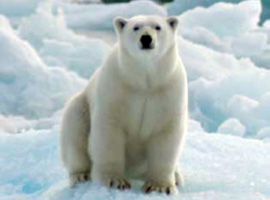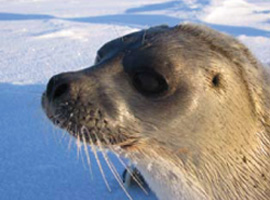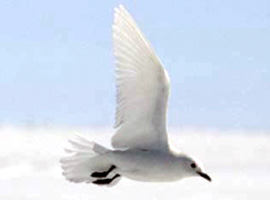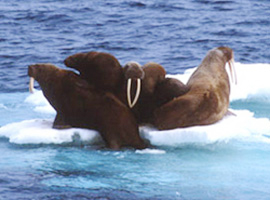What do ivory gulls and polar bears have in common?
All of them, and many other species, depend on sea ice—at least for part of the year. It’s uncertain how Arctic species will fare if sea ice continues to retreat and melts faster.

- Polar Bears
- Polar bears (Ursus maritimus) rely on sea ice as a platform for catching seals—and to travel: a highway when it is solid or a raft when it breaks up and floats.
- Photo © Chris Linder Photography

- Ringed Seals
- Ringed seals (Pusa hispida) are tied to sea ice for everything they do—rest, hunt, give birth, and nurse their young.
- Photo © Brendan P. Kelly

- Ivory gulls
- Ivory gulls (Pagophila eburnean) are scavengers that depend on leftovers from polar bear kills.
- Photo © Bryan and Cherry Alexander Photography

- Ice algae
- Ice algae (Fragillariopsis sp. and Nitschia sp.) are food for many Arctic animals.
- Photo © Evelyn and Barry Sherr, College of Oceanic and Atmospheric Sciences, Oregon State University


